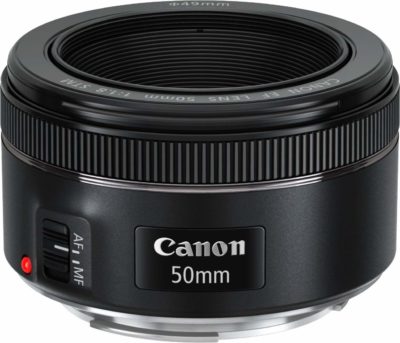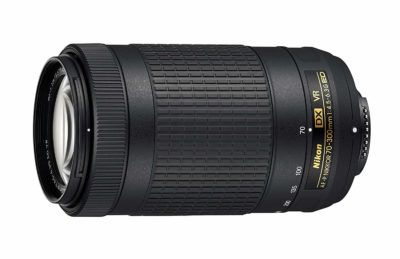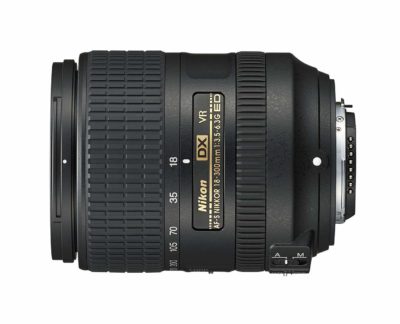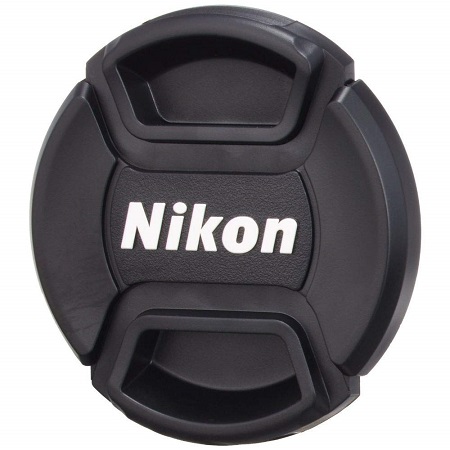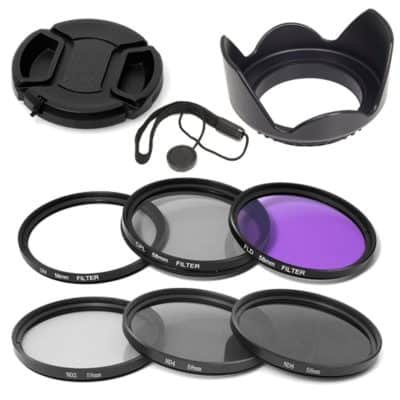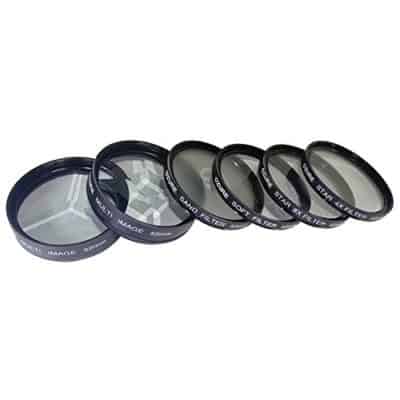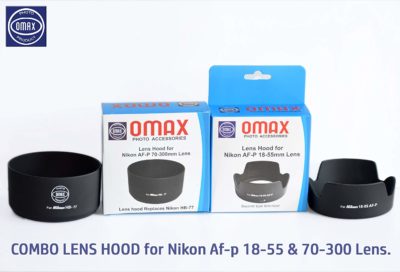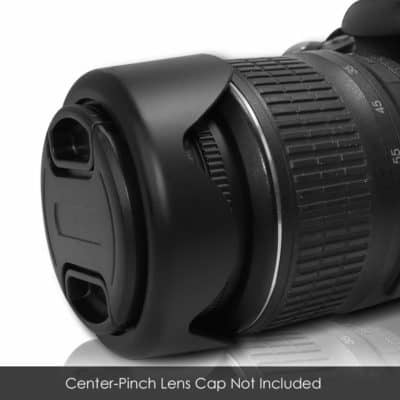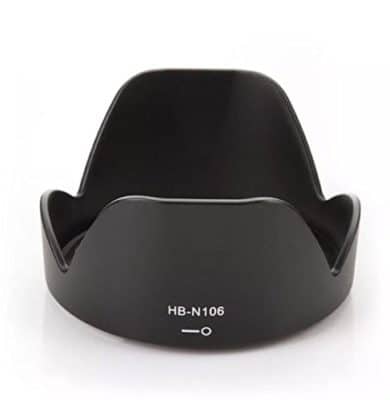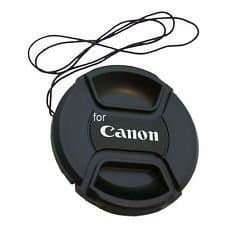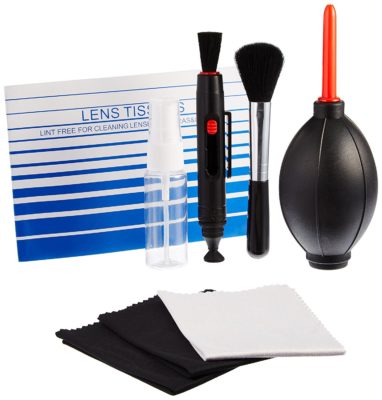Best Lens and Lens Accessories Review
The lens and lens accessories are important parts of a camera. These often have a huge impact on the image quality your camera will produce. There are numerous lenses and accessories available on the market.
Deciding on the accessories you need for your photography is very important. In this article, we will be looking at some of the important accessories that can take you a step higher in photography. We have listed all the information required to help you make the right buy like what is a camera lens, types of lenses, a detailed buying guide and different types of lens accessories.
We have done the research for you and listed the top 11 products and also answered the most frequently asked questions.
Top 11 Lens and Lens Accessories in India
| Product (Best Brands) | Best Price |
|---|---|
Our Pick | |
Best Nikon Lens | |
Best Zoom Lens Clarity | |
Best filter set | |
Multiple filters | |
Easy storage | |
Best lens hood | |
Best lens hood | |
Low range prices | |
Best cleaning kit |
What Is the Camera Lens?
The camera lens is a part of the camera consisting of pieces of glass known as the lens elements. The elements are responsible for bending light in a different manner. The function of each lens element will differ from the other. Nonetheless, combining each element produces an output that is very sharp on the imaging chip.
In simpler terms, the camera lens is responsible for focusing light on the imaging chip of a camera.
Lens Accessories You Need for Your Camera
Lens cap
A lens cap is a cover that protects your camera lens from damage and scratches when not in use and in storage. Any camera you purchase should come with a front and rear lens cap. In some cases, it is possible for the lens cap to go missing.
A proprietary lens cap is one that is sold by the manufacturer for the particular camera you own. The only issue with this lens cap is its cost,
The next step is to decide on either a screw-in lens cap or a snap-on lens cap.
Lens hood
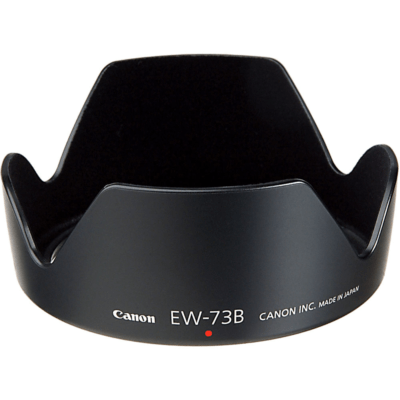
The lens hood is also referred to as the lens shades. It may not be included when you purchase the camera lens. Nonetheless, it is an essential accessory that helps in eliminating lens glare and flare from any direct light source or sunlight.
In a lot of new lens designs, the addition of multiple lens coating can help to minimize the issue of lens flaring. The lens hood usually offers an option that is budget friendly and also easy to implement.
The focal length of the lens determines the hood you will select. This is important in order to eliminate vignetting.
A long, fully circular hood is the choice for a macro and telephoto lens while a shorter, petal-shaped hood design is the choice for wide-angle lenses.
Filters
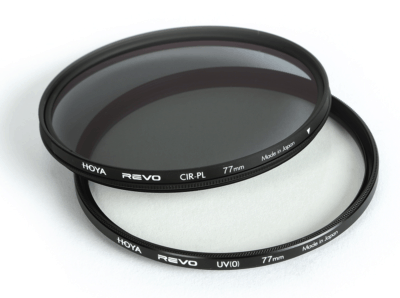
To enable users to add a filter to a camera lens, there is usually a filter thread on the lens. It is commonly present on the front bezel. The use of a filter includes adding effects, color tints, or darkening a scene. Below are common types of filters based on how they are mounted:
Square filters
In this case, there is a filter holder that easily connects to the filter thread on the lens. This filter holder allows users to add one or multiple filters to the camera. The 3×3 and 4×4 are common square filters in use. Although they find use in other forms of photography, they are excellent choices for landscape photography.
Circular screw-on filters
Filters in this category are those that screw on directly on the filter thread available on the lens. The circular filters are available in varying thicknesses which has an effect on vignetting while others may affect the use of a lens cap. Some common filters that fall into this category include the UV/Haze/clear, color, neutral density, and polarizer filters.
Drop-in filters
A drop-in filter is a common filter for use in telephoto lenses. The filters that fall into this category are the polarizing and clear filters. They offer very high quality but also come at a high price.
Rectangular filters
These filters use a mounting system similar to the square filters in which a filter holder system is attached to the lens. They are also common options for landscape photography but offer more room for movement in the up and down directions.
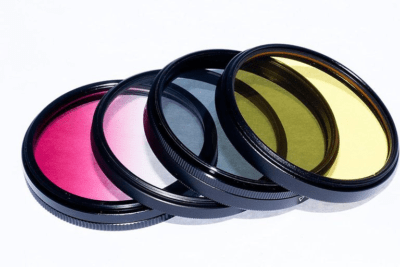
Depending on the function of the filters, you can find the following types of filters:
- Polarizing filters
- Close-up filters
- Neutral Density filters
- UV/Clear/Haze filters
- Special effects filters
- Color/Warming/Cooling filter
Filter threads
The filter threads usually differ on each lens. On the front of the lens, it is common to find the size of the filter threading. Sometimes you may find it on the barrel. It is often a diameter measurement such as Ø=60mm.
Rear filters
In some cases, it is impossible to insert a filter at the front of a lens due to its design. This is the case with a fisheye lens and other special lenses. In this case, there will be room for a filter at the rear of the lens. The only problem is that the filter does not protect the front of the lens.
Cleaning kit
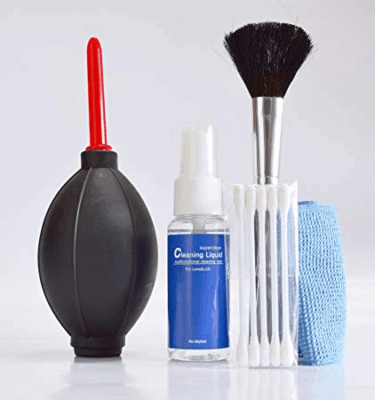
A cleaning kit is an essential part of your lens accessories. It is necessary for the maintenance of the lens after use. It helps to prevent poor image quality before use and also avoid paying excess for repairs of the lens.
Protective Gear
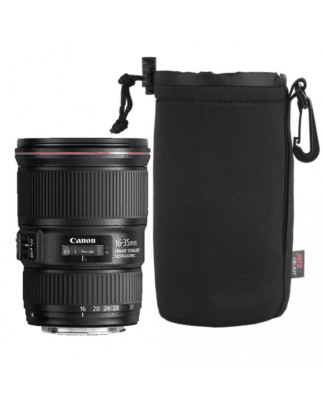
Protective cases for single lenses help you to not rely on the non-padded photography bag by keeping the gear safe in an everyday bag. Just like the lens caps, cases also provide additional protection to the gear. These cases can be made of soft or hard construction, have belt hoops and removable shoulder straps for easy carry.
Make sure you measure the height of the lens to know the interior height required to keep it protected.
Lense Wrap
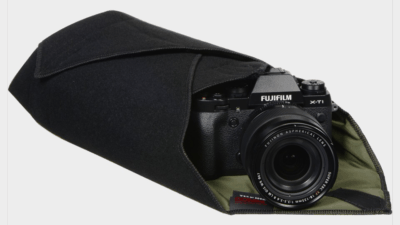
These come in different measurements to protect varied dslr accessories like flashes, lenses, compact cameras and other important tools. The sewn fasteners secure each corner of the wrap, thus protecting the accessories completely.
Types of Camera Lenses
Prime lenses
This is a lens with a focal length that is fixed. Instead of a zoom feature when you want an object to appear closer, you will need to move closer to the object. Another solution is to change the camera lens.
The maximum aperture on a prime lens is usually much larger than a zoom lens. As a result, users can get better low-light performance, enhancements in the quality of the image, and improved background blur.
Kit lenses
A kit lens is a type of lens that comes with a camera you purchase. If you find people referring to an 18-55mm zoom lens as a kit lens, it is because it is the most common type of kit lens available.
It is an excellent option for beginners since it is cheaper, lighter, and compact. On some kit lenses, users can also get an image-stabilizer feature built-in. If you want to enjoy your photography, it is important you purchase a better lens once as soon as you can.
Zoom lenses
This is a type of lens that allows users to adjust the focal length. Such lenses usually have a specification that includes two focal lengths. There is a minimum focal length and a maximum focal length which indicates the range.
Although this is a very convenient type of lens to have at your disposal, it also comes with its downsides. One of such is a maximum aperture that is smaller than other lenses. To get a zoom lens with a maximum aperture that is very large, it will cost a huge amount.
To convert the focal length range of a zoom lens to a compact camera specification, simply divide the larger number by the smaller number. For a zoom lens with a range of 24-70mm, you will divide 70 by 24. This will give an approximate of 3x zoom.
Macro lenses
A macro lens is a lens that allows users to get closer to the subject they intend to photograph. With such a lens, you get better focus and also have the opportunity to cover a frame with your subject. Popular areas where macro lenses are used is in photography of small objects like food, insects, and plants.
Fisheye lens
This is a type of lens that offers an ultra-wide-angle view. It offers a panoramic view that is better than any other lens available. It achieves a convex image appearance through the distortion of lines. The distortion is a result of a unique mapping.
In terms of appearance, the lens looks like a fisheye as the name implies. It is an excellent option for abstract photography but has a commercial application in security cameras. It is excellent for this application due to the wide view that can extend from 100-180 degrees.
If you are hoping to get a portrait, this lens is not the best choice.
Telephoto lenses
If you need to take a picture of a subject which is very far, then a telephoto lens is your best bet. This is a special type of lens that includes both zoom and prime lenses.
So where can you best make use of these lenses? If your guess is in wildlife photography, then you are right. It is an excellent choice for situations where you would prefer to keep your distance. A head start when running from a lion is always beneficial. They are also useful in astronomy and sports photography.
Telephoto lenses usually have a shallow depth of field making them offer a better background blur. Some of the downsides with the use of this lens are the weight and the cost.
Factors to Consider When Selecting a Lens
Lens type
In most cases, buyers usually decide on either a zoom or fixed lens when about to make a purchase. There are certain benefits of the zoom lens that are not available on the fixed lens. The reverse is also the case.
For a fixed lens, one of the benefits is the higher brightness in comparison to a zoom lens. It is also lightweight and smaller than a zoom lens. Although prices may also affect this benefit, correcting different lens errors on a fixed lens is usually a lot easier than on a zoom lens. It means you can get improvements in the image quality of these lenses.
In the case of a zoom lens, the option of multiple focal lengths is often an attractive feature. This feature allows the lens to be useful for various purposes. It means that users can get more versatility at a lower cost.
Price
When making any purchase, the price is the most important factor. with camera lenses, the quality you get is what you pay for. most of the excellent camera lenses come at a reasonably high price.
A lot of people go for the more expensive lenses due to some common issues with cheaper lenses. Some of the problems with these lenses include low build quality, low-end optics, poor output, and more.
The kit lenses that come with cameras are often hit or miss. In some cases, you can get a kit lens that offers great quality. If you have enough money, it is important you quickly replace this lens.
Aperture
The total amount of light that is able to pass through a lens is determined by the aperture. For this reason, the size of the aperture is important. A small aperture implies a low amount of light while a large aperture implies more light.
If you will be taking pictures in low-light conditions, then having a lens with a wide aperture will be very important. It helps to eliminate image blurring during the process.
The image depth of field is also influenced by the aperture of the lens. The depth of field of an image is the area of the image with sharpness. A small depth of field is often common with lenses having a large aperture. Such lenses will produce images with a blurry background.
Since zoom lenses usually have different focal lengths, they usually have two aperture numbers. It is often indicated as f/2.4 – f/5.6, in the case of an 18 – 55mm zoom for example. The lower aperture number, in this case, represents the amount of light at 18mm while the larger number represents the amount of light entering at the maximum zoom of 55mm.
In terms of price, cheaper camera lenses usually have a higher aperture number.
Focal length
The focal length is another very important factor to consider when selecting a lens. It helps users in determining a telephoto lens and a wide angle lens. It is usually a number indicated in millimeters.
The various lenses have applications where they are most suited. They also have size differences. Other differences are usually noticeable in the features they offer to users.
When deciding on a focal length, it is also important you understand the normal length. The normal lens is what lies between a wide angle lens and a telephoto lens. It is the 50mm focal length in the 135 formats.
The normal lens offers a view that is similar to our natural view in terms of magnification and distance. Any lens with a focal length higher than that of the normal lens is a telephoto lens. Those that are below the focal length are the wide angle lenses.
The size of the image sensor in a camera also affects the focal length. It means that depending on the particular camera, the focal lens of the same lens may vary.
Image stabilization
While a lot of DSLR camera bodies usually have optical image stabilization, it is common to find lenses featuring stabilization.
To achieve stabilization in a lens, the elements in the lens are moved. This will help in eliminating any camera shake in the lens.
It may be impossible to find image stabilization in lenses from manufacturers that produce camera bodies with optical image stabilization.
The way this feature is indicated usually depends on the manufacturing brand. It is important to learn the lingo that a specific brand uses.
Type of Focus
The common types of focus available include a Manual and Automatic focus. The automatic focus lenses utilize an ultrasonic motor or a regular focusing motor to maintain its focus on a particular object.
In a manual focus, it is usually necessary to manually adjust the depth of field of a camera to maintain focus. Some cameras have an “AF/MF” label. This allows users to decide if they want to enable an automatic focus or disable the feature.
Distortion
A common lens error is a distortion. This error occurs when there is an inward or outward bend of straight lines near the image edges. To indicate correction for this error, a lens might come with a specification. In most cases, the correction may have been made by the manufacturer.
Perspective
It is common when taking a picture to find that an object appears thinner as it gets longer.It can be towards the top of a building in your photograph.
The Lens Perspective shift is a feature to correct this issue. It is available on a certain number of lenses. to enhance or lower the depth of view of an image, lenses also allow users to shift the focus plane.
Lens diameter
The lens diameter of a camera is very important if you will be using a filter. The diameter of a camera is usually in millimeters and it is the number that follows the ø symbol. It is often noticeable on the side of the camera close to the top or on the front part of the lens.
1. Canon EF50MM F/1.8 STM Lens – Our Pick
There is no way you can discuss photography without the mention of Canon. Although cameras are a huge part of this company, there are other electronics that the company produces. These include printers, scanners, projectors, computers, and more.
The Stepping Motor lens that is used on this lens is to improve the focus speed of this camera for the best results.
- The Stepping Motor (STM) technology on this lens enables very fast focus for taking photos on short notice
- The f/1.8 aperture on this lens allows more light to get inside
- This is a great lens for portraits with the 50mm focal length that allows users to cover the frame with the subject
- The camera lens has a circular 7-blade design that eliminates the bokeh effect
- Improvement in the placement of the focus ring and restructuring of the exterior offers a simple adjustment of manual focus
- The lens coating and the unique lens arrangement reduce the flare and ghosting on images
- Users have access to a maximum magnification of 0.21x and a minimum focusing distance of 0.35m
- Easy slide lever on the side of the lens to switch between autofocus and manual focus
- It uses a metal lens mount in place of a plastic mount for enhanced durability
- The upgrade and inclusion of a Stepping Motor offers a quiet, smooth, and fast focusing function
- Using a mount adapter, this lens is compatible with numerous EOS cameras
- Minor issues with the focusing ring on certain occasions
2. Nikon AF-P DX NIKKOR ED VR Lens – Best Nikon Lens
Quality is the main focus of Nikon. This is how they remain a relevant company in the industry. Another lens that offers a super-telephoto photography option, this lens also includes an image stabilization feature that eliminates motion blur when taking pictures without the use of a tripod.
- The lens comes with a lens cap on purchase to offer protection during use
- It has an Image Stabilization feature that is suitable for users that perform handheld photography
- The lens has a focus distance indicator for easy use
- It has a fully automatic diaphragm with 7 diaphragm blades and a rounded opening
- The focal length scale on the lens is in millimeters
- It comes with a rear lens cap and a snap-on front cap
- It has an independent zoom ring with a manual zoom
- The lens construction of this unit features 14 elements in 10 groups along with one ED lens element
- It has a focal length from 70mm to 300mm
- There is an autofocus feature available on the lens
- Despite being a telephoto grade lens, this lens remains compact and lightweight for the users
- It is a great telephoto lens that brings objects from a far distance into focus
- The stepping motors offer very quiet operation and a fast focus
- Many users appreciated the sharpness of the picture quality
- A lot of users complained about the camera focus issues
3. Nikon 18-300mm f/3.5-6.3G ED VR AF-S DX Nikkor Lens – Best Zoom Lens Clarity
Nikon remains one of the top manufacturers of photography equipment around the world. Their products include both cameras as well as high-quality lenses for the best image output at all times. This lens offers high performance with a Silent Wave Motion technology that enhances the autofocus feature of this device.
It is a zoom lens offering a range up to the super-telephoto spectrum.
- This is a zoom lens that offers a zoom capability of 16.7x that covers a wide-angle to super-telephoto photography
- The Nikon Silent Wave Motion (SWM) technology provides a quiet and accurate autofocusing feature at a high speed
- For easy portability and movement, the lens is very lightweight at just 550g
- The mount has a weather-seal that prevents the entry of water and dust into the camera body and lens
- The lens consists of three aspherical lens elements and three ED glass that improve optical performance by minimizing aberrations
- With the inclusion of the Nikon Vibration Reduction System, the lens is capable of eliminating image blur due to sudden movement of the camera while taking pictures
- It has an aperture range from f/3.5 to f/22
- This is an excellent lens for wildlife photography due to the quiet focusing feature
- It is a lightweight and compact camera lens
- The zoom-lock switch hinders movement of the lens
- Many users have appreciated the zoon clarity
- The lens doesn’t come with a pouch or a hood
4. Mostos Camera Lens Cap 55 mm for Nikon Lens Replacement –
Mostos makes some of the most durable camera lens caps to protect your expensive cameras. This particular one is a 55mm size lens cap for Nikon lens replacement. The replacement cap is from a third party and not from the original Nikon manufacturer. The cap is made from durable material and can be used for protecting the lens from external damages.
- The cap is made with quality material to protect the lens from dust and scratches.
- The cap fits in the centre-pinch front lens for the best protection.
- It is easy to attach and detach.
- The cap is simple to use.
- No cons found so far.
5. XCSOURCE 6pcs Filter Set – Best filter set
XCSOURCE are manufacturers of high-quality accessories that make life easier for consumers. They also provide entertainment and electronics, cameras and photo accessories, and many more.
This filter set is a great addition for any user that always wants to have multiple options. It consists of a UV filter, ND filters, polarizer filter, and an FLD filter. It also includes a lens cap and lens hood in the package.
- It comes with a lens hood having a petal design that is lightweight, small, and minimizes flaring
- Minimize the number of UV rays entering the camera lens with the UV filter
- There is a lens cap to protect the lens when it is not in use and during transportation
- It includes an FLD filter that removes the color casting from a fluorescent tube when shooting without a flash
- There are ND filters that reduce the depth of view and support slow shutter speeds
- The ND filters include an ND2, ND4, and ND8 filters
- A polarizer filter is included in this filter set
- The filter set consists of 6 filters including a lens hood and lens cap as additional accessories
- There are multiple filters to pick from for the best photo session
- The filter set comes with a lens cap, lens hood, and lens storage pouch
- Many users have appreciate the ring
- It can be difficult to fit a different lens cap on these lens filters
6. Ozure Video Filter Kit – Multiple filters
The Ozure Video filter kit consists of 6 filters that are unique and offer various functionalities. These filters are capable of producing special effects on the image. In addition to the filters, a storage pouch is also available to prevent accidental damage or loss of any filter while in transit.
- It is a set of six filters for versatility and uses for different purposes
- The filters are screw-in type filters that will be suitable for use on various camera threading without the need for a filter mount
- The filters have a black aluminum housing and are suitable for 52mm camera lenses
- It is designed using glass material which provides a high-output quality
- There is a sand and soft filter that blurs the background of an image while providing a crisp and clear center image
- Users can create over 3 figures on a single image using the multi-image filter
- The filters are made of glass which offers high-quality outputs in comparison to the plastic filters
- Comes with a strong pouch and a strap that comes with the set to serve as a storage unit
- All the filters in the set are of the same size
7. Omax Lens Hood – Easy storage
This hood is a great option for users who own a Nikon camera. It is available in two different design options depending on the requirements of the user. The ability to mount in a reverse position also offers an easy option when dealing with the storage of the camera. It is the best Nikon lens hood available in the market.
- The hood is compatible with original Nikon lens caps available on the market
- It is an important accessory for preventing the entry of excess sunlight into the camera lens
- The hood can be placed in a reverse position to provide both protection and an easy storage option when the camera is not in use
- It has an interior with a non-matte finish to prevent any lens flare
- It is available in regular circular design and a flower design
- The lens hood eliminates any form of stray light that may interfere with the picture providing a high-quality output
- It is easy to use this lens hood along with any lens filter mounted on the camera lens
- The plastic material of the hood doesn’t seem very durable
8. Hanumex® 58MM Reversible Flower Lens Hood – Best lens hood
Hanumex is both the producer and seller of some of these computer accessories. It offers the camera lens hood which is an important protective add-on for any camera. The hood is suitable for use on Canon cameras and also has a quality flower design.
It has a screw mount and the hood can be attached both facing inwards and outwards.
- It is compatible with Canon cameras including the REBEL and EOD series
- The hood is reversible which means you can mount it facing inward for easy storage
- It features a screw mount that makes it easy to attach to the lens thread or filter on a camera
- The compatibility with different camera lenses makes it a cheap option for users
- It is suitable for use on 58mm lenses without any need to take it off during your session
- It is spacious enough to support the use of a lens cap while it is mounted
- As a user, it is easy to mount the hood outwards when you need to make use of the camera and also mount it inwards when you need to store the camera
- The screw-in base on this lens hood is very easy to use
- The hood offers a fast and easy release
- A maximum zoom on an 18-55mm lens will result in minor vignetting when using this lens hood
- Contrary to various images, this lens hood doesn’t come with a lens cap
9. SHOPEE BRANDED HB-N106 Bayonet Lens Hood – Best lens hood
This bayonet lens hood is a great option for users that want to protect their lens and also enhance the quality of their image output. It has a matte finish and an excellent visual appearance that totally enhances the aesthetic quality of your camera lens.
- It prevents excess light from getting into the camera lens
- The hood features a bayonet mount design that is easy to setup and install
- The extension over the lens makes it possible to prevent users from accidentally touching the camera lens
- Storage is an important aspect of a hood and this hood mounts in a reverse direction for easy storage
- Suitable for use on the Nikon D3300 and D3400. Other models include Nikon AF-P DX 18-55mm VR lens
- It features an advanced ABS material that offers great durability
- It has a matte finish and is an excellent fit on compatible camera lenses
- A lens cover or a UV lens can still be installed for use after mounting the lens hood on the camera
- The lens hood is a great option for use on compatible cameras and will not fit on any camera not listed on the specifications
- It may not be as durable as users expect
10. SHOPEE 58mm Front Lens Cap – Low range prices
Another e-commerce platform that is willing to break into the homes of its customers with its excellent products is Shopee. The products available from the company include camera lenses, hoods, lens caps, and more.
The 58mm front lens that this company offers is an important addition that every photographer needs. It is very durable and difficult to get lost.
- The design of the lens cap features the use of high impact plastic to improve its durability and make it long-lasting
- The lens is suitable for protecting your lens from scratches when not in use and also preventing the entry of dust
- There is a strap attached to the lens cap so that you can fasten it to the lens or camera body to prevent loss
- It is a center –pinch lens cap that is very easy to remove from the lens surface and replace when necessary
- It is suitable for Canon cameras with 18-55mm lenses and 55-250mm lenses such as the 600d, 700d, 1200d, and 1300d
- The addition of a strap to this camera is an excellent feature so users can quickly take off the lens cap without worrying about losing it in the process
- It is a very durable lens cap that will last for a long time
- Many users have appreciated its quality
- It is only suitable for protecting the front lens
- There may be issues getting the cap to fit on certain lenses
11. AmazonBasics Cleaning Kit – Best cleaning kit
As the largest online retailer, Amazon has also expanded into the development and sales of various products. One of the few products that are available directly from Amazon under the AmazonBasics includes this cleaning kit.
This is a multipurpose kit with all the necessary items you will need to properly maintain your camera lens and body. There is also a warranty on this cleaning kit.
- This kit includes a lens brush that makes it possible to sweep any form of dust on the lens
- There are 50 sheets of lens cleaning tissue paper which is suitable for all lenses including multi-coated lenses and doesn’t leave any residue or scratch
- To eliminate dirt from the sensor, camera body, or lens, there is an air blower included in this kit
- The kit comes with a 1-year warranty from the manufacturers
- There is an empty, refillable spray bottle for storing cleaning solution for use
- The kit includes 3 microfiber cleaning cloth for their various cleaning purposes
- A cleaning pen that removes smudges and fingerprints with the soft cleaning pad on one end of the stick and a retractable soft brush on the other side
- This cleaning set contains all the necessary items you will need to properly maintain a camera lens without problems
- The kit is safe for use on any camera lens
- It is suitable for use on cameras and other electronics which are sensitive and requires careful cleaning
- There is no cleaning solution available in this cleaning kit
Frequently Asked Questions
1. Why should you avoid compressed air when cleaning your lens?
The blast from compressed air or a canned option has the power to damage both the optics and the sensor of a lens. A much safer option is a manual air blower that doesn’t have the same amount of pressure as compressed air.
2. Can I use the lens from a particular brand on another brand?
A simple way to understand this question is to ask if you can use a Nikon lens on a Canon camera. There are usually limitations in the use of a different brand lens on a particular camera. The only way to achieve this use is to incorporate a mount adapter. There are a few downsides to the use of an adapter on a camera.
3. How do I determine the size of the filter for my camera lens?
The format of the filter is important in this case. It may be a filter that you slot into a frame or one that you screw onto the lens rim. The rectangular and square filters are slot into a frame. They often have a single size that is larger and suitable for all lenses.
Other types of filters with a circular shape are usually a screw-on type. To determine the size of the screw-on filter you need, simply get the diameter of the lens.
4. Should I purchase a plastic or glass filter?
Glass filters usually offer much higher quality than a plastic filter. The main issue with glass filters is that they come at a much higher cost. The price also increases as the diameter of the filter increases. There are some cheaper glass filters available but these are often of lower quality and reduce the sharpness of the image.
Conclusion
In this review, we have looked at some of the essential accessories you will need when you have a lens. These include protective accessories as well as those that are for maintenance. It is always important you pick these camera accessories; it becomes easier to get the best out of any lens you purchase.
We have made a selection of some lenses as well as accessories that can help improve your photography. These selections are to serve as a guide for anyone that is still having issues. Our picks for lenses – Canon EF50MM F/1.8 STM Lens and Nikon AF-P DX NIKKOR ED VR Lens.




